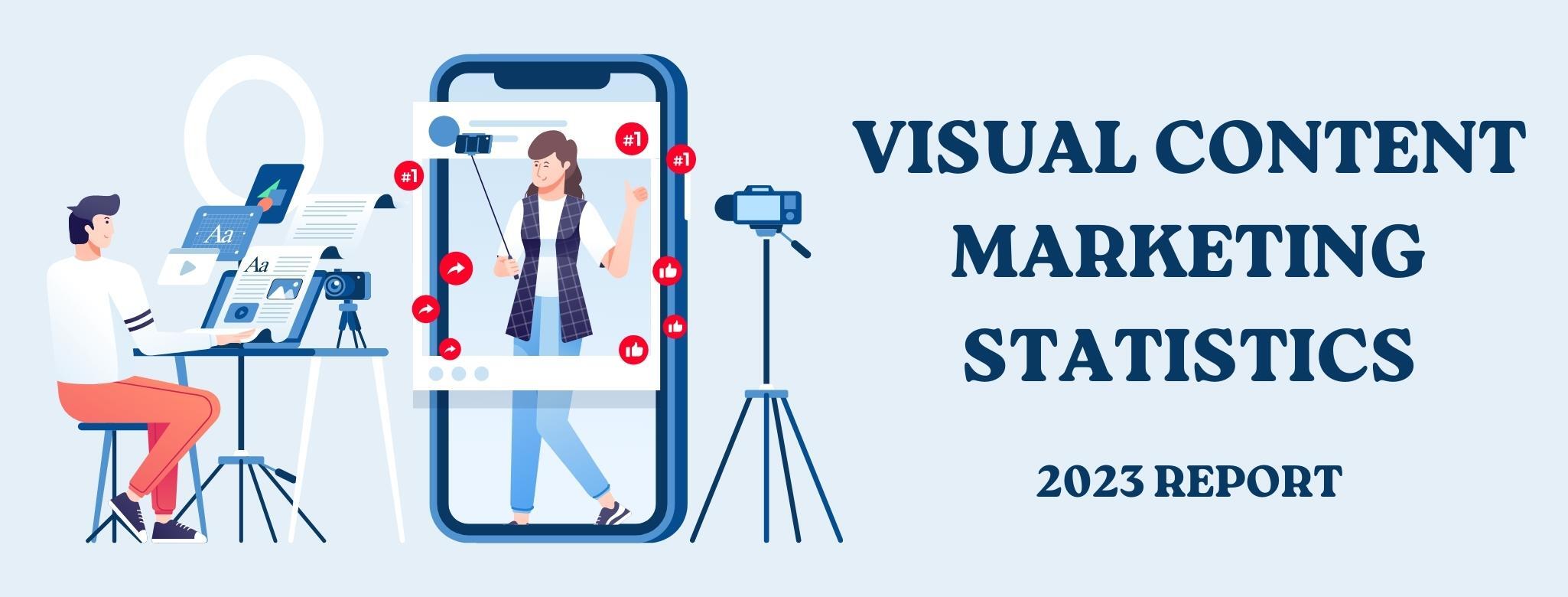
07 Jun VISUAL CONTENT MARKETING STATISTICS IN 2023
A recent study of over 1 million articles shows that articles with at least one image every 75-100 words received twice as many shares as articles with fewer images. This statistic demonstrates the power of visual content in today’s digital landscape.
With social media platforms pushing visual content more and more, it is no surprise that marketers are taking notice and utilizing visual content marketing tools such as infographics, illustrations, and webinars to increase visibility. Webinars also taking lead with 40% of marketers using webinars as visual content marketing tools with success rates of 83%.
Furthermore, infographics and illustrations are the best performing visual content for sharing and commenting with an engagement rate of 41.5%. Even something as simple as adding images to Facebook posts can result in 2.3 times increase in engagement when compared to posts without them. These are just some advantages of utilizing visual content in the marketing strategy.
We at Amra&Elma have compiled a list of the 22 most important visual content marketing statistics for 2023 below:
Visual Content Marketing Statistics (Editors Choice)
- Videos on landing pages can lead to 800% more conversions
- Articles with at least one image every 75-100 words receive twice as many shares as articles with fewer images
- Infographics and illustrations are the best performing visual content types with an engagement of 41.5%
- Facebook posts with images receive 2.3 times the engagement of those without them
- Using the word ‘video’ in the subject line of an email can increase open rates by 6% and click rates by 65%
- 93% of companies have obtained a new customer after sharing a video on social media
- 84% of consumers agree that watching promotional videos has convinced them to purchase a product or service
Top 22 Visual Content Marketing Statistics in 2023!
A recent study by BuzzSumo analyzed the social media sharing patterns of over 1 million articles and found that articles with at least one image every 75-100 words received twice as many shares as articles with fewer images. In an era where the average person’s attention span is only 8 seconds, visual content is essential for catching the eye of potential customers and holding their attention long enough to make a sale.
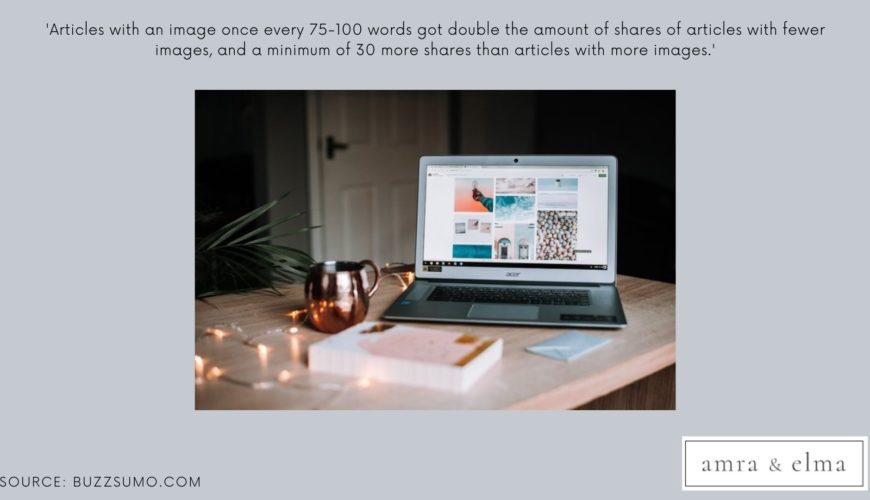
VISUAL CONTENT MARKETING STATISTICS #2 – 35% of Instagram Story users prefer shorter, narrative-style stories
As visual content marketing becomes increasingly popular, it’s important to understand the trends and preferences of users. According to a recent Hubspot survey, 35% of Instagram Story users prefer shorter, narrative-style stories. This is followed by interactive stories that focus on polls and quizzes. Users are more likely to engage with visual content that is easy to consume and provides some level of interactivity.
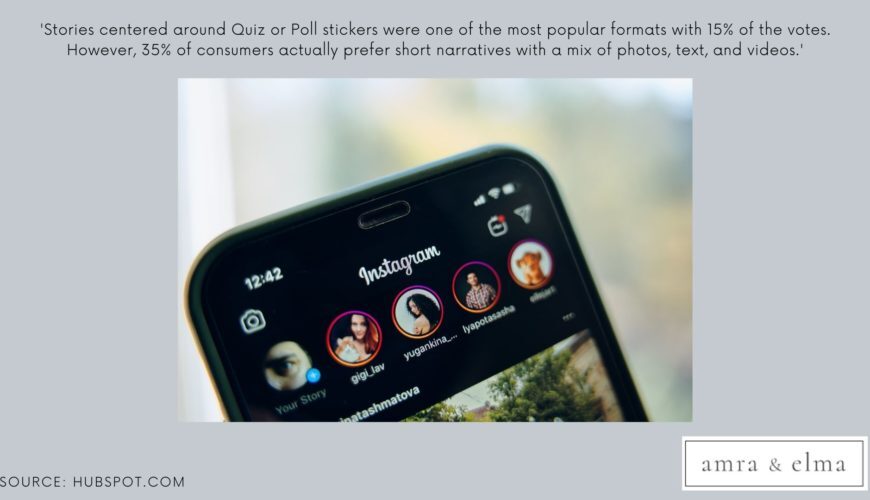
VISUAL CONTENT MARKETING STATISTICS #3 – around 62% of marketers are using webinars as visual content marketing tools with success rates of 91%
According to a survey, visual content marketing tools like webinars are becoming increasingly popular, with around 62% of marketers using them currently. This is likely because they are an effective way to distribute visual content like videos not only on social media and websites, but also through email marketing and other channels. And success rates are high, with 91% of those that have used webinars for visual content marketing considering themselves successful. According to Live Reacting, live stream pre recorded video can be used not just for marketing purposes, but can effectively become a branding tool that others in the company can also utilize when creating their own brand videos (think intro recording that is used as a branding tool across different training videos).
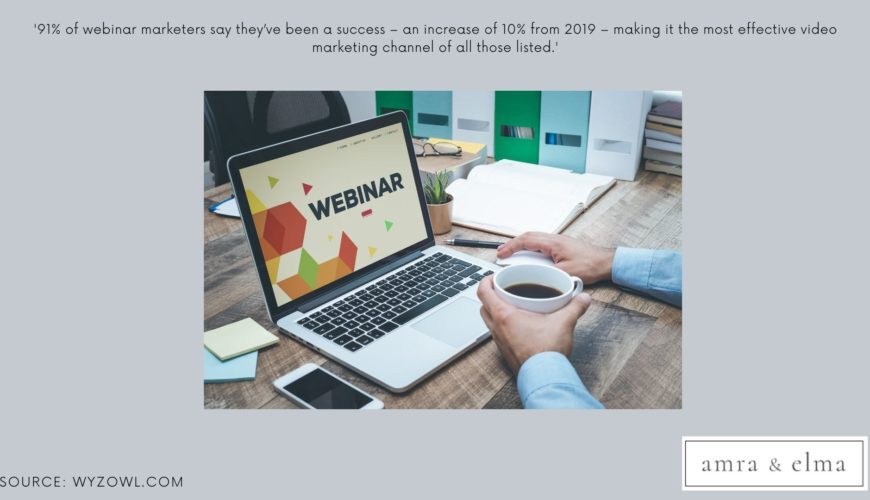
VISUAL CONTENT MARKETING STATISTICS #4 – infographics and illustrations are the best performing visual content types with a solid engagement of 41.5%
According to research, infographics and illustrations are the visual content types that perform the best in terms of engagement. These visuals produce solid engagement of 41.5%, while charts and visualizations come in second at 25.7%. Videos and presentations follow closely behind at 20.2%, while stock photos (7.6%) and gifs and memes (5%) round out the bottom of the list.

VISUAL CONTENT MARKETING STATISTICS #5 – posts with images on Facebook receive 2.3 times the engagement of those without them (37% increase in engagement)
A study by BuzzSumo found that posts with images on Facebook receive 2.3 times the engagement of those without them. This is likely because people are drawn to visually appealing content, and studies have shown that humans process visual information 60,000 times faster than text. In addition, social media strategist Jeff Bullas reports that Facebook posts with photos receive an average 37% increase in engagement. As platforms like Instagram and Snapchat continue to grow in popularity, it is expected to see visual content playing an even bigger role in marketing and advertising.

VISUAL CONTENT MARKETING STATISTICS #6 – Tweets with video have 10x the engagement of Tweets without video
When scrolling through their Twitter feed, people are more likely to stop and watch a video than read a long block of text. This fact is backed up by a recent study that shows that video Tweets have ten times the engagement of Tweets without video.
VISUAL CONTENT MARKETING STATISTICS #7 – using the word ‘video’ in the subject line of an email can increase open rates by 6% and click rates by 65%
According to a research, using the word ‘video’ in the subject line of an email can increase open rates by 6%. Click rates go up by 65% when ‘video’ is used in the subject line, and unsubscribe rates decrease by 26%. Including a video thumbnail in the email can also improve subscriber engagement by nearly 41%.
Stories and videos are more likely to be seen and shared than text-based posts, which is why an increasing number of businesses are using video as part of their marketing strategy. According to recent studies, roughly 93% of companies have obtained a new customer after sharing a video on social media. What’s more, nearly two-thirds of consumers say they’re more likely to buy a product after watching a video about it.
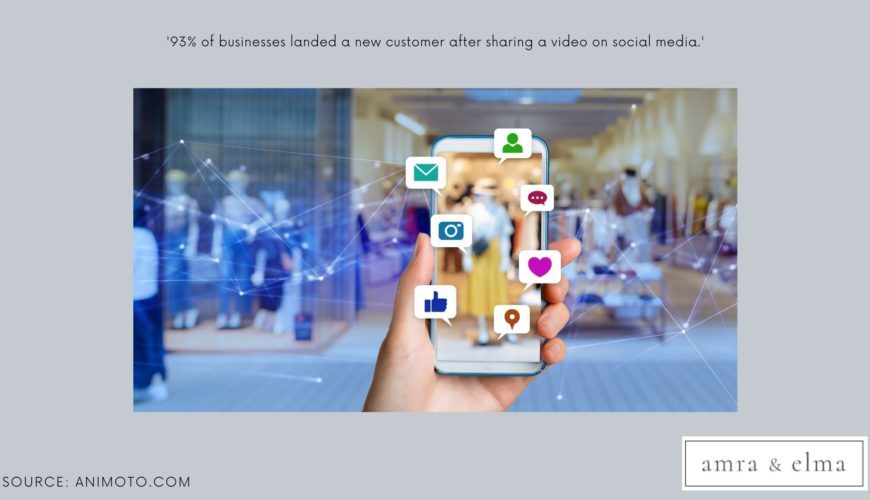
VISUAL CONTENT MARKETING STATISTICS #9 – viewers remember 95% of a message when they watch it in a video, as opposed to 10% when reading it in text
In an age where consumers are bombarded with over 5,000 ads per day, it’s no surprise that many marketers are looking for new ways to break through the noise. According to a study, viewers remember 95% of a message when they watch it in a video, as opposed to 10% when reading it in text. This highlights the power of visual content to capture attention and communicate messages effectively.
VISUAL CONTENT MARKETING STATISTICS #10 – 35% of video marketers had used Facebook Live as a marketing channel and 74% reported that it had worked well for them
A recent survey of video marketers found that 35% had used Facebook Live as a marketing channel, with 74% reporting that it had worked well for them. 36% of respondents said they planned to keep using the platform, making it one of the most popular channels among video marketers. The popularity of Facebook Live is likely due to the fact that it allows marketers to connect with their audience in a more personal way than other visual content formats. In addition, the platform makes it easy to share live videos with a wide audience, increasing the reach of marketing campaigns.
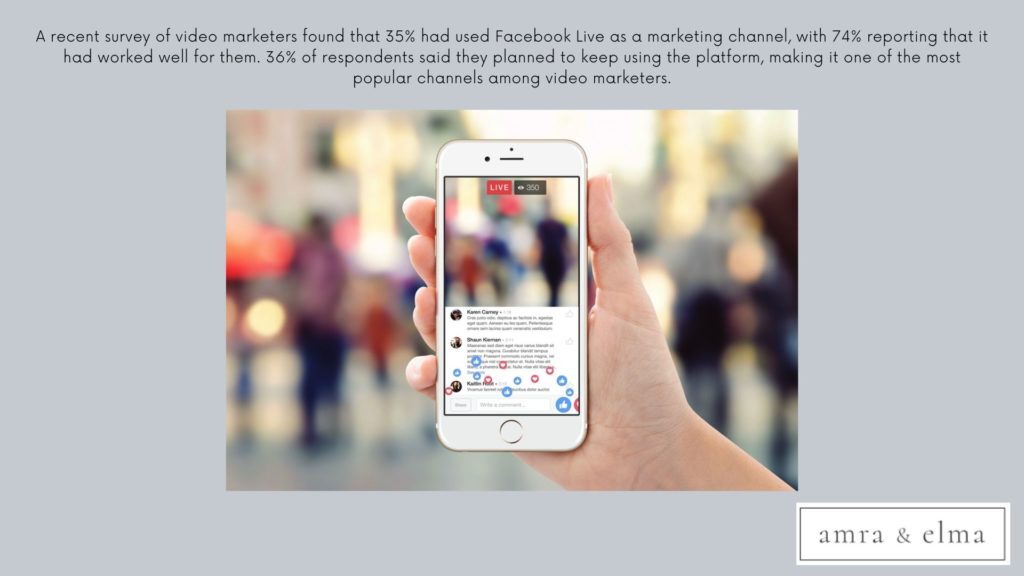
VISUAL CONTENT MARKETING STATISTICS #11 – 84% of consumers agree that watching promotional videos has convinced them to purchase a product or service
Visual content marketing is a powerful tool that can convince consumers to purchase a product or service. According to Wyzowl, 84% of consumers agree that watching promotional videos has convinced them to purchase a product or service. This is probably due to the fact that visual content has more potential to stick in the viewer’s mind, making it more likely that they will remember the brand when they are ready to make a purchase.
VISUAL CONTENT MARKETING STATISTICS #12 – Pinterest records 600 million visual searches per month
The visual content marketing landscape is constantly evolving, and Pinterest is at the forefront of this change. According to Pinterest Business, the platform records 600 million visual searches per month. With its high level of engagement and visual search capabilities, Pinterest is a great platform for businesses looking to reach their target audience.
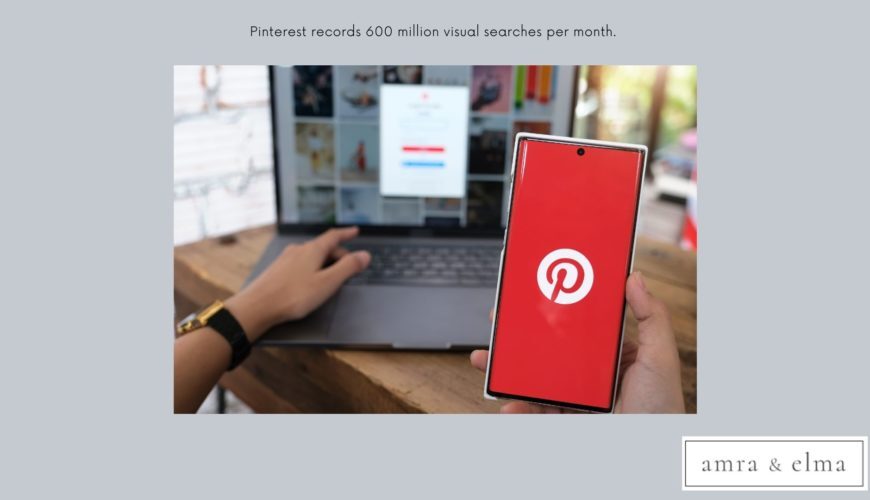
VISUAL CONTENT MARKETING STATISTICS #13 – 75% of Instagram users take action after watching a brand’s video ad on the platform
A recent study found that 75% of Instagram users take action after watching a brand’s video ad on the platform. This includes clicking through to purchase a product or service. Visual content is so important that businesses who use it are said to be nearly twice as likely to see engagement from their audiences.
VISUAL CONTENT MARKETING STATISTICS #14 – Internet users spend 88% more time on websites and web pages that feature video content
Video is an effective way to communicate complex information in a concise and visual manner. According to SocialMediaToday found that Internet users spend 88% more time on websites and web pages that feature video content. Thanks to the popularity of video streaming sites like YouTube and Netflix, people are used to watching videos online. As a result, businesses are increasingly using video content to market their products and services.
VISUAL CONTENT MARKETING STATISTICS #15 – 49% of marketers said that visual content marketing was ‘very important’ to their overall strategy
Humans are hardwired to respond to visual stimuli, and when it comes to marketing, that means that visual content is more likely to capture attention and drive engagement than text alone. According to a recent survey of marketers, 49% of respondents said that visual marketing was ‘very important’ to their overall strategy, and 22% said it was ‘important’. This means that over two-thirds of marketers believe visual content is essential to their success. Only 19% said that their strategy was nothing without visual content.
VISUAL CONTENT MARKETING STATISTICS #16 – 72% of consumers would rather learn about a product or service they are interested in through a video
A recent study by SocialMediaToday showed that 72% of consumers would rather learn about a product or service they are interested in through a video. This stat should come as no surprise, as visual content has been shown to be more engaging and effective than other forms of marketing content. In fact, visual content is so effective that it can increase conversion rates by up to 80%. When it comes to video marketing specifically, viewers are able to retain 95% of the information they watch, compared to only 10% when reading text.
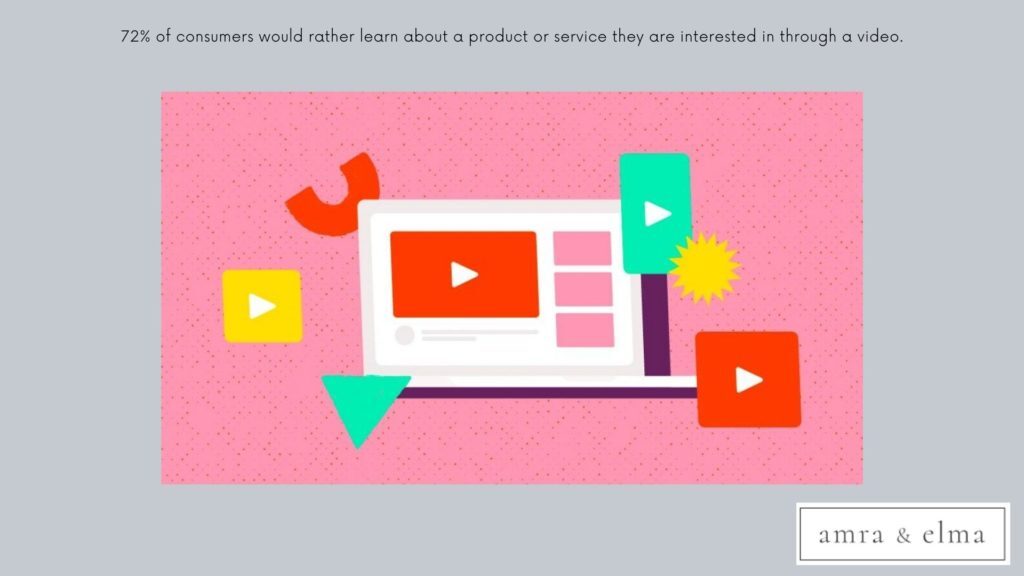
VISUAL CONTENT MARKETING STATISTICS #17 – 74% of marketers now incorporate visual elements into more than 70% of their content
According to Venngage 2020 studies, visual content is becoming increasingly important in the world of marketing with 74% of marketers now incorporating visual elements into more than 70% of their content. Infographics have become particularly popular, with 65% of B2B marketers in North America using them as a part of their marketing strategy, as per Content Marketing Institute.
VISUAL CONTENT MARKETING STATISTICS #18 – 70% of respondents in a recent survey claimed that they watch Facebook Stories more often than Snapchat or Instagram
Facebook Stories is a visual content marketing tool that allows businesses to share photos and videos with their followers. The platform has quickly become popular with consumers, with 70% of respondents in a recent survey claiming that they watch Facebook Stories more often than Snapchat or Instagram.
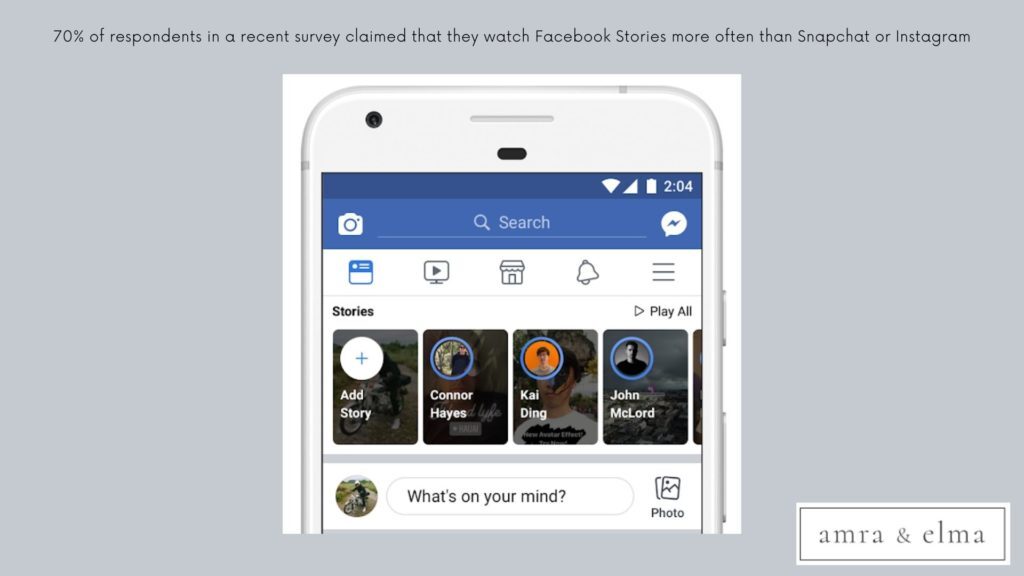
According to Verizon Media, 69% of consumers keep the sound off when watching online videos. This is in contrast to social media Stories, which are sometimes watched with the sound on by 56% of consumers, and always watched with the sound on by 29% of consumers. People are more likely to engage with visual content if they don’t have to listen to it as well.
VISUAL CONTENT MARKETING STATISTICS #20 – videos on landing pages can lead to 800% more conversions
According to a recent survey, 70% of marketers believe that content adorned with visuals will reap better business results. And it’s not just businesses that are seeing the value in visual content- consumers are too. People are drawn to visual content and are more likely to engage with it – videos on landing pages can lead to 800% more conversions as per FunnelScience.
VISUAL CONTENT MARKETING STATISTICS #21 – 68.7 million people in the US might use AR once per month, with 42.9 million of those using VR
With visual content becoming increasingly important in marketing, it’s no surprise that augmented and virtual reality are having a moment. According to eMarketer, 68.7 million people in the US alone might use AR once per month, with 42.9 million of those using VR. Virtual and augmented reality offer unique opportunities to engage with customers and tell a brand story in a new way.
VISUAL CONTENT MARKETING STATISTICS #22 – since 2000, the searches for the term ‘infographics’ had increased by 800%
The appeal of infographics is that they can convey a lot of information in a concise and visually appealing way. In fact, studies have shown that infographics are more likely to be shared and remembered than other types of visual content. It’s no surprise, then, that the search for infographics has increased dramatically in recent years. Since 2000, the searches for the term had increased by 800%. This trend shows no signs of slowing down, and as a result, there are now many services that specialize in creating infographics.
Visual Content Marketing Statistics – The Future of Visual Content Marketing
The future of the visual content marketing landscape looks promising. With 74% of marketers now incorporating visual elements into more than 70% of their content, and 49% saying that visual content is ‘very important’ to their overall strategy, it’s clear that there is a demand for quality visuals. Additionally, 35% of video marketers have used Facebook Live as a marketing channel and 74% reported that it had worked well for them. As more platforms emerge that allow for easy creation and sharing of visuals, we can expect to see even more companies taking advantage of this powerful marketing tool.
What Is Visual Content Marketing and Why Is It So Important?
Visual content marketing is the process of using images, videos, and other forms of visual content to market a product or service. It has become increasingly important in recent years as more and more people consume information online via social media and other channels. Visual content marketing is more engaging than text-based content, and it can be used to attract attention, generate leads, and boost sales.
Many different types of visual content marketing can be used in digital marketing campaigns. Some of the most popular include photographs, infographics, videos, and memes. Each type of visual content marketing has its strengths and can be used in different ways to achieve desired results.
When creating visual content marketing campaigns, it is important to keep several things in mind. The first is the target audience. The visuals should be relevant to the audience and appeal to their interests. They should also be consistent with the overall branding of the product or service being marketed.
When developing a visual content marketing campaign, it is also important to make sure that the visuals are high quality and visually appealing. They should be properly formatted and edited, and they should accurately reflect the message that is being conveyed.
Finally, when working on visual content marketing, it is important to ensure that the visuals are well-distributed across the web and that they are included in all relevant marketing materials.
Visual content marketing is one of the most important aspects of digital marketing today. It’s been shown to increase engagement, generate more leads, and drive more conversions. When it comes to getting your message across, visuals are processed 60,000 times faster in the brain than text, making visual content marketing one of the most relevant marketing aspects today.
There are many reasons why visual content marketing is so important for your marketing efforts. First, images and videos are a great way to capture attention. They help break up text-heavy posts and pages and can quickly communicate a message. Additionally, visual content marketing is so relevant because humans are hardwired to process visuals quickly and easily, so using images and videos in your marketing can help you stand out from the competition.
Another reason visual content marketing is so important is that it can help you tell a story. A good story can engage your audience and help them connect with your brand or product. Stories also help people remember information better, which is why including images and videos along with your marketing messages can be so effective.
Finally, using visual content marketing in your digital marketing campaign can help you build trust with your audience. When people can see what they’re buying or hear about what you do, they’re more likely to trust your brand. Images and videos also help people understand complex concepts or ideas better, which can lead to increased sales and conversions.
In short, using visual content marketing is essential because it’s a great way to capture attention, tell stories, build trust, and explain complex concepts. If you’re not using visuals in your marketing already, you’re missing out on a lot of potential success.

